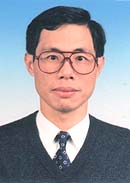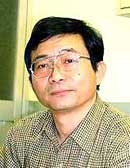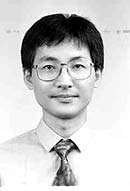Contents: 2024 | 2023 | 2022 | 2021 | 2020 | 2019 | 2018 | 2017 | 2016 | 2015 | 2014 | 2013 | 2012 | 2011 | 2010 | 2009 | 2008 | 2007 | 2006 | 2005 | 2004 | 2003 | 2002 | 2001
2004, 9
Design optimization of double-chamber mufflers on constrained venting system by GA method
language: English
received 18.06.2004, published 11.08.2004
Download article (PDF, 350 kb, ZIP), use browser command "Save Target As..."
To read this document you need Adobe Acrobat © Reader software, which is simple to use and available at no cost. Use version 4.0 or higher. You can download software from Adobe site (http://www.adobe.com/).
ABSTRACT
Whilst the space volume of mufflers in a noise control system is often constrained for maintenance in practical engineering work, the maximization on muffler’s performance becomes important and essential. To efficiently depress the venting noise, a high performance of double-chamber muffler is then proposed and investigated in this paper. To assess the optimal solution in the muffler design, the genetic algorithm (GA), a stochastic algorithm, is also applied, accordingly.
This paper presents the GA application for the size optimal design of double-chamber muffler under space constraints and dealing with broadband noise. Using technique of four-pole matrix for sound transmission loss (STL) calculation in conjunction with the GA technique, the optimisation was carried out.
Before GA operation, a single-chamber muffler is simulated and compared with the experimental data for accuracy check of mathematical model. Thereafter, a simple program of noise control at the pure tone of 500 Hz has been pre-run to verify the correctness of genetic algorithm before the optimal design of broadband noise was performed. Results show that both the accuracy of mathematical model and the correctness of GA method are acceptable. Consequently, the GA optimization on double-chamber muffler proposed in this study may provide a quick and correct approach.
Keywords: double-chamber muffler; four-pole matrix method; sound transmission loss; space constraints; GA optimization
16 pages, 13 figures
Сitation: Long-Jyi Yeh, Ying-Chun Chang, Min-Chie Chiu. Design optimization of double-chamber mufflers on constrained venting system by GA method. Electronic Journal “Technical Acoustics”, http://www.ejta.org, 2004, 9.
REFERENCES
[1] Edward B. Magrab. Environmental Noise Control. John Wiley & Sons, New York, 1975.
[2] L. J. Yeh, M. C. Chiu, G. J. Lay. Computer aided design on single expansion muffler under space constraints. Proceedings of the 19th National Conference on Mechanical Engineering (The Chinese Society of Mechanical Engineers), C7: pp. 625–633, Yun Lin, R.O.C., 2002.
[3] L. J. Yeh, Y.C.Chang M. C. Chiu, G. J. Lai, M. G. Her. Shape optimization of constrained double-chamber muffler with extended tubes by mathematical gradient methods. Proceedings of the 3rd Conference on S.M.E., pp. 625–633, Kao hsiung, R.O.C., 2002.
[4] D. E. Goldberg. Genetic Algorithm in Search, Optimization and Machine Learning. Addison-Wesley, Massachusets, 1988.
[5] M. G. Prasad, M. J. Crocker. Studies of acoustical performance of a multi-cylinder engine exhaust muffler system. Journal of Sound and Vibration. 1983, 90(4), pp. 491–508.
[6] M. G. Prasad, A note on acoustic plane waves in a uniform pipe with mean flow, Journal of Sound and Vibration. 1984, 95(2), pp. 284–290.
[7] M. L. Munjal. Acoustics of Ducts and Mufflers with Application to Exhaust and Ventilation System Design. John Wiley & Sons, New York, 1987.
[8] Y. H. Kim, J. W. Choi and B. D. Lim. Acoustic characteristics of an expansion chamber with constant mass flow and steady temperature gradient (theory and numerical simulation). Journal of Vibration and Acoustics. 1990, 112, pp. 460–467.
[9] J. H. Holland. Adaptation in Natural Artificial System, University of Michigan Press, 1992.
[10] D. Jong. An Analysis of the Behavior of a Class of Genetic Adaptive Systems. Doctoral thesis, Dept. Computer and Communication Sciences, University of Michigan, Ann Arbor, 1975.
[11] Mark E. Schaffer. A Practical Guide to Noise and Vibration Control for HVAC Systems. ASHRAE, 1991.
 |
Long-Jyi Yeh received his MS and PhD degrees from the Mechanical Engineering Department of Tatung University, Taipei, Taiwan, in 1987 and 1994, respectively. From 1992 to 1995, he jointed Tatung Company as a senior automation engineer, where he developed researches of manufacturing and automation technologies. In 1995, he jointed the faculty of the Department of Mechanical Engineering at Tatung University, Taipei, Taiwan as an Associate Professor. e-mail: ljyeh(at)ttu.edu.tw Corresponding author. Mailing address: Department of Mechanical Engineering, Tatung University, 40, Chungshan N. Rd., 3-rd Sec., Taipei, Taiwan 104, R.O.C. |
|
 |
Ying-Chun Chang received his MS degree from the Mechanical Engineering Department of Manhattan College, New York, USA, in 1982. Since 1983, he has been with the Department of Mechanical Engineering, Tatung University, Taipei, Taiwan, where he is engaged in teaching and research in the area of noise and vibration control. His current research interests include computer-aided acoustical filter design, experimental modal analysis and smart structures. He is currently an Assistant Professor at Tatung University. e-mail: ycchang(at)ttu.edu.tw |
|
 |
Min-Chie Chiu received his MS degree from the Mechanical Engineering Department of Stevens Institute of Technology, New Jersey, USA in 1989. He jointed CTCI, Taipei, Taiwan as an environmental engineer in 1990 where he developed practical design work in noise and vibration control during his employment with the company. He still continues his design work in CTCI and owns seven patents in sound absorber personally. Currently, he is pursuing his PhD degree at Tatung University, Taipei, Taiwan. e-mail: Min-Chie.Chiu(at)ctci.com.tw |
|
